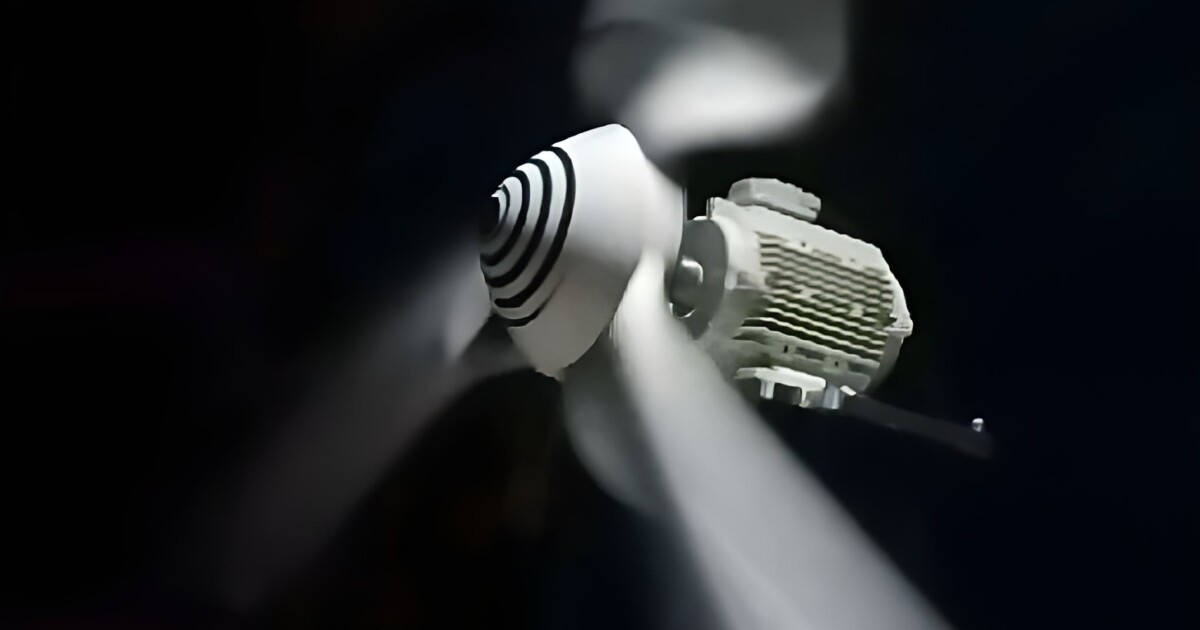Report on a Novel Small Wind Turbine and its Contribution to Sustainable Development Goals
Introduction and Technological Innovation
A collaborative project between Germany’s Fraunhofer Institute for Applied Polymer Research and the BBF Group has resulted in the development of a small wind turbine with exceptional efficiency. This innovation represents a significant advancement in decentralized power generation, directly supporting multiple Sustainable Development Goals (SDGs). The turbine’s enhanced performance is attributed to several key technological advancements.
- Lightweight Rotor Design: The rotors are designed to be hollow, a departure from the foam-filled standard, which significantly reduces their weight.
- Advanced Manufacturing: A process utilizing 3D printed molds and an automated-fiber-placement system allows for the precise creation of a laminate composite structure.
- Inherent Storm Resilience: The composite layers are engineered to allow the blades to flex elastically in high winds, automatically reducing speed and preventing system overload.
Alignment with SDG 7: Affordable and Clean Energy
The project makes a direct and substantial contribution to SDG 7 by increasing access to affordable, reliable, and clean energy. The turbine’s design overcomes common limitations of small-scale wind power, making clean energy a more viable option for a wider range of applications.
- Expanded Geographic Viability: The turbine begins operation in wind speeds as low as 2.7 m/s, compared to the 4 m/s required by similar systems. This broadens the potential for wind energy generation in regions with less consistent or powerful winds.
- Exceptional Energy Conversion: Testing has demonstrated an efficiency of 53%, which is remarkably close to the theoretical maximum of 59.3% established by Betz’s Law.
- Increased Power Output: At wind speeds of 10 m/s, the turbine can achieve 450 revolutions per minute and output 2,500 watts, making it 83% more powerful than comparable turbines currently on the market.
Contributions to SDG 9 and SDG 11: Innovation, Infrastructure, and Sustainable Communities
This development supports SDG 9 (Industry, Innovation, and Infrastructure) through its use of cutting-edge manufacturing and design. Furthermore, its practical applications are aligned with the objectives of SDG 11 (Sustainable Cities and Communities) by promoting resilient and sustainable infrastructure.
- Decentralized Energy for Communities: With a maximum height of 10 meters, the turbines are suitable for installation in residential and business settings, fostering energy independence and reducing reliance on centralized power grids.
- Enhanced Disaster Resilience: The technology offers a critical application for disaster relief organizations, providing a means to rapidly deploy power generation capabilities in emergency scenarios.
Future Developments and Commitment to SDG 12: Responsible Production
The project is currently in the prototype testing phase. Future plans demonstrate a clear commitment to SDG 12 (Responsible Consumption and Production) by addressing the product’s entire life cycle.
- Material Optimization: Following the completion of testing, the development teams will work to further optimize the rotors.
- Focus on Recyclability: A key objective is to transition from the current composite structure to a monomaterial. This change will significantly simplify the recycling process at the end of the turbine’s lifespan, promoting a circular economy for green technology.
Conclusion: Impact on SDG 13 and Global Goals
The development of this high-efficiency small wind turbine is a notable contribution to global sustainability efforts. By advancing clean energy technology (SDG 7), fostering industrial innovation (SDG 9), enabling more resilient and sustainable communities (SDG 11), and planning for responsible end-of-life material management (SDG 12), this project directly supports the overarching goal of **SDG 13: Climate Action**. Such innovations are crucial for the transition to decentralized, sustainable energy systems and the mitigation of climate change.
Analysis of Sustainable Development Goals (SDGs) in the Article
1. Which SDGs are addressed or connected to the issues highlighted in the article?
- SDG 7: Affordable and Clean Energy – The article’s central theme is the development of a new, highly efficient small wind turbine designed for “green home power generation” and to provide an “independent energy supply.” This directly relates to increasing access to clean and renewable energy.
- SDG 9: Industry, Innovation, and Infrastructure – The text highlights technological innovation, including the use of “3D printing to create molds” and an “automated-fiber-placement system.” The collaboration between the Fraunhofer Institute (a research organization) and the BBF Group (an engineering firm) to develop and test this new technology exemplifies the focus on enhancing scientific research and upgrading technological capabilities.
- SDG 11: Sustainable Cities and Communities – The turbines are described as being “small enough to be installed in home settings” and are promoted as a way for “end consumers and businesses” to achieve “decentralized energy generation individually and sustainably.” This contributes to making human settlements more sustainable and resilient.
- SDG 12: Responsible Consumption and Production – The article explicitly mentions a future goal to make the turbine rotors from a “monomaterial instead of a composite,” with the specific aim of making them “easier to recycle at the end of their lifespan.” This addresses the need for sustainable production patterns and reducing waste.
- SDG 13: Climate Action – By developing a more efficient wind turbine, the project contributes to the adoption of renewable energy sources, which is a primary strategy for mitigating climate change. The article also notes the turbines’ potential use by “disaster relief organizations,” which strengthens resilience to climate-related hazards.
2. What specific targets under those SDGs can be identified based on the article’s content?
- Target 7.2: By 2030, increase substantially the share of renewable energy in the global energy mix. The development of a turbine that is “83% more powerful than similar turbines” and can operate in light winds directly supports the expansion and efficiency of renewable energy generation.
- Target 7.a: By 2030, enhance international cooperation to facilitate access to clean energy research and technology… and promote investment in energy infrastructure and clean energy technology. The project is a collaboration between a research institute and an engineering firm focused on creating advanced clean energy technology.
- Target 9.4: By 2030, upgrade infrastructure and retrofit industries to make them sustainable, with increased resource-use efficiency and greater adoption of clean and environmentally sound technologies. The article describes a new, highly efficient turbine and plans for its recyclability, which aligns with making energy infrastructure more sustainable and efficient.
- Target 9.5: Enhance scientific research, upgrade the technological capabilities of industrial sectors… encouraging innovation. The research by the Fraunhofer Institute and the development of a novel hollow rotor design using advanced manufacturing techniques is a direct example of this target.
- Target 11.6: By 2030, reduce the adverse per capita environmental impact of cities. Providing a means for “decentralized energy generation” in “home settings” with clean wind power helps reduce the environmental footprint of urban and suburban areas.
- Target 12.5: By 2030, substantially reduce waste generation through prevention, reduction, recycling and reuse. The explicit plan to “work on creating them with a monomaterial… which will make them easier to recycle” directly addresses this target by designing for end-of-life recycling.
3. Are there any indicators mentioned or implied in the article that can be used to measure progress towards the identified targets?
- Energy Efficiency and Output: The article provides several quantitative metrics that serve as indicators of technological progress in clean energy. These include the turbine’s ability to “output 2,500 watts,” its high efficiency of “53%,” and its operational capability in low winds of “2.7 meters per second.” These data points measure the effectiveness of the new technology.
- Technological Advancement: The use of specific advanced manufacturing processes like “3D printing” for molds and an “automated-fiber-placement system” are indicators of the adoption of innovative and clean technologies in the industrial sector.
- Product Recyclability: The future goal of creating the rotors from a “monomaterial” to make them “easier to recycle” is a qualitative indicator of progress towards sustainable production. The success of this goal could be measured by the recycling rate of the turbines at the end of their lifespan.
- Application in Disaster Relief: The mention that the turbines could be used by “disaster relief organizations looking to deliver power in emergency situations” implies an indicator related to strengthening resilience. The number of units deployed in such situations could be a measure of progress.
SDGs, Targets, and Indicators Summary
| SDGs | Targets | Indicators |
|---|---|---|
| SDG 7: Affordable and Clean Energy | 7.2: Increase the share of renewable energy. 7.a: Facilitate access to clean energy research and technology. |
– Turbine efficiency of 53%. – Power output of 2,500 watts. – Operational wind speed of 2.7 m/s. – Collaboration between research institute and private company. |
| SDG 9: Industry, Innovation, and Infrastructure | 9.4: Upgrade infrastructure for sustainability and resource-use efficiency. 9.5: Enhance scientific research and upgrade technological capabilities. |
– Development of lightweight, hollow rotors. – Use of 3D printing and automated-fiber-placement systems. – Creation of a product that is 83% more powerful than existing alternatives. |
| SDG 11: Sustainable Cities and Communities | 11.6: Reduce the adverse per capita environmental impact of cities. | – Suitability for installation in “home settings.” – Provision of “decentralized energy generation” for consumers and businesses. |
| SDG 12: Responsible Consumption and Production | 12.5: Substantially reduce waste generation through recycling. | – Stated goal to create rotors from a “monomaterial” to make them “easier to recycle.” |
| SDG 13: Climate Action | 13.1: Strengthen resilience and adaptive capacity to climate-related hazards. | – Potential use by “disaster relief organizations” to provide power in emergencies. |
Source: newatlas.com







